Charted: Drake’s Legacy
by Tim
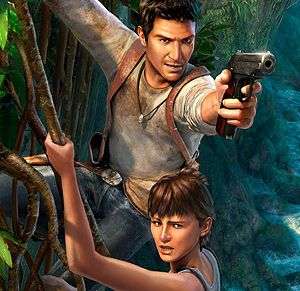 Sic Parvis Magna – greatness from small beginnings. If you didn’t learn about Sir Francis Drake’s motto in your history lessons then you might have by playing Uncharted. Along with coordinates for his supposed burial site off the coast of Panama, the three words are inscribed into the explorer’s ring, which modern-day adventurer, trouble-finder and self-proclaimed Sir Francis descendant Nathan Drake strings around his neck, and their meaning aptly summarises he and his games’ rise to fame. Since its debut, Uncharted has become bigger and better, and has garnered an increasing level of commercial success and critical acclaim. It has become perhaps Sony’s most important flagship franchise, shooting Crash Bandicoot and Jak & Daxter developers Naughty Dog into gaming stardom, and making a PlayStation mascot and iconic modern day action hero out of Nathan Drake, as well as a gaming celebrity of the man who brings him to life, Nolan North.
Sic Parvis Magna – greatness from small beginnings. If you didn’t learn about Sir Francis Drake’s motto in your history lessons then you might have by playing Uncharted. Along with coordinates for his supposed burial site off the coast of Panama, the three words are inscribed into the explorer’s ring, which modern-day adventurer, trouble-finder and self-proclaimed Sir Francis descendant Nathan Drake strings around his neck, and their meaning aptly summarises he and his games’ rise to fame. Since its debut, Uncharted has become bigger and better, and has garnered an increasing level of commercial success and critical acclaim. It has become perhaps Sony’s most important flagship franchise, shooting Crash Bandicoot and Jak & Daxter developers Naughty Dog into gaming stardom, and making a PlayStation mascot and iconic modern day action hero out of Nathan Drake, as well as a gaming celebrity of the man who brings him to life, Nolan North.
In a generation that spawned some of my most favourite franchises, such as Assassin’s Creed, Gears Of War and Mass Effect, it was always Uncharted that resonated with me the most. As a kid who grew up watching James Bond and Indiana Jones, playing Tomb Raider and Prince Of Persia, here was a game that encapsulated everything I loved about them all – the death-defying stunts, the historical mystery, the exotic locations – and even managed to better them. Nobody could argue against Uncharted being a derivative pastiche, proudly wearing its influences on its sleeve, but it did everything so well and seamlessly blended it all together that it didn’t matter if there was barely an original bone in its body.
Gameplay could flit between slick shooting, electrifying platforming and easy-going puzzle solving in the blink of an eye. Nathan Drake is 007 and Dr Jones rolled into one, with an everyman persona, witty one-liners and a casual dress sense that made him the subject of many a man crush across the globe (shush, don’t tell anybody), despite his generic-sounding archetype and, y’know, genocidal tendencies. Hey, nobody’s perfect. And Naughty Dog, while they may not have been the first, were definitely the most predominant pioneers of quality storytelling in games, utilising performance capture to ground their characters in a way no other game before ever had, and not only set but continue to raise the bar for narrative-driven games, which few have even come close to matching.
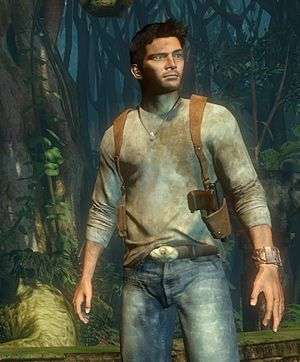 It’s almost hard to believe it was the Christmas of 2007 when Nathan Drake first burst onto the scene in Uncharted: Drake’s Fortune, the “small beginning” to the greatness that would follow. Next to its globetrotting blockbuster sequels, Drake’s Fortune is comparatively restrained, but to this day there still remain plenty of bangs for your buck. Setting the first of many series traditions, its opening immediately grabs you. After resurfacing Sir Francis Drake’s empty coffin off the Panamanian coast, Nate and journalist love interest Elena Fisher fend off a bunch of nasty pirates (“The modern kind. They don’t take prisoners. At least, not male prisoners”) before a brief stint and surprise discovery in the Amazon leads them to an uncharted island (see what they did there) in the middle of the Pacific Ocean. It’s here where the remainder of the story plays out, and where Nate, Elena and shifty sidekick Victor “Sully” Sullivan hope to uncover the fabled El Dorado, a statue of gold rather than a city. But, of course, rival treasure hunters and all-round bad guys are hot on their heels, and it’s up to our band of intrepid adventurers to make sure the not-as-it-seems treasure doesn’t fall into the wrong hands.
It’s almost hard to believe it was the Christmas of 2007 when Nathan Drake first burst onto the scene in Uncharted: Drake’s Fortune, the “small beginning” to the greatness that would follow. Next to its globetrotting blockbuster sequels, Drake’s Fortune is comparatively restrained, but to this day there still remain plenty of bangs for your buck. Setting the first of many series traditions, its opening immediately grabs you. After resurfacing Sir Francis Drake’s empty coffin off the Panamanian coast, Nate and journalist love interest Elena Fisher fend off a bunch of nasty pirates (“The modern kind. They don’t take prisoners. At least, not male prisoners”) before a brief stint and surprise discovery in the Amazon leads them to an uncharted island (see what they did there) in the middle of the Pacific Ocean. It’s here where the remainder of the story plays out, and where Nate, Elena and shifty sidekick Victor “Sully” Sullivan hope to uncover the fabled El Dorado, a statue of gold rather than a city. But, of course, rival treasure hunters and all-round bad guys are hot on their heels, and it’s up to our band of intrepid adventurers to make sure the not-as-it-seems treasure doesn’t fall into the wrong hands.
Nothing you haven’t seen before, right? Sure, Uncharted’s lack of originality in story and gameplay was its major criticism – heck, even Nazis fit into it somewhere – but the sheer entertainment value on offer meant it managed to negate any genre conventions and clichés it adhered to come the closing credits. By then you’d already been won over by the cinematic presentation, you’d already become hooked by the story’s intrigue, and you’d already fallen head over heels for Nate and Elena as much as they had for each other.
Uncharted’s sense of timing in and out of game was a plus point too. Not only was it a well-paced adventure with a healthy dose of humour, but its arrival on shelves couldn’t have come at a better time. The PS3 was celebrating its first birthday, and until Uncharted came along the best exclusives were still launch day fodder Resistance: Fall Of Man and MotorStorm – hardly fair competition against Halo 3, Gears Of War and Dead Rising on Xbox 360, or Twilight Princess and Super Mario Galaxy on Wii. But now game-starved PS3 players finally had a game to be proud of, a game that set the graphical benchmark for what that bulbous box could do for the rest of its cycle, a game that started life for the PS3’s defining series. Drake’s Fortune wasn’t quite the system-seller Sony hoped it would be, nor was it the best ever debut for any big-name franchise, but it was a strong foundation nevertheless, and as our trio of heroes sailed off into the sunset, precious cargo in tow, you got a strong inkling the sure-to-be sequel would be something truly special indeed.
One year later at the Spike VGA awards, Uncharted 2: Among Thieves was revealed to the world. Fast-forward a further six months to the strongest E3 in recent memory and Uncharted 2 arguably stole the show with an incredible stage demo that redefined expectations of just what the PS3 was capable of, and a taste of the series’ solid first steps into online multiplayer. And come release, critics and players united in singing its praises from the rooftops everywhere. In a Christmas shared by Assassin’s Creed II and Modern Warfare 2, Uncharted 2 was THE game to play!
 So why is Uncharted 2 so brilliant? Where do I start? Everything that was great about the first was ratcheted up to eleven in the sequel: the pacing is pitch-perfect, the set-pieces mind-blowingly spectacular, and Greg Edmonson’s terrific score truly comes into its own. Yes, difficulty spikes crop up towards the end (another series tradition) and, again, innovation and originality have never been Uncharted’s forte, but the package as a whole is so damned near perfect that any minor shortcomings are easily lulled over. I don’t say this lightly, but I personally believe that Uncharted 2: Among Thieves remains, to this day, the greatest action-adventure of our time, wholly deserving of that whopping 96 Metacritic score, and, if it wasn’t for Naughty Dog’s very own The Last Of Us, could very easily have nabbed my personal Game Of The Generation accolade.
So why is Uncharted 2 so brilliant? Where do I start? Everything that was great about the first was ratcheted up to eleven in the sequel: the pacing is pitch-perfect, the set-pieces mind-blowingly spectacular, and Greg Edmonson’s terrific score truly comes into its own. Yes, difficulty spikes crop up towards the end (another series tradition) and, again, innovation and originality have never been Uncharted’s forte, but the package as a whole is so damned near perfect that any minor shortcomings are easily lulled over. I don’t say this lightly, but I personally believe that Uncharted 2: Among Thieves remains, to this day, the greatest action-adventure of our time, wholly deserving of that whopping 96 Metacritic score, and, if it wasn’t for Naughty Dog’s very own The Last Of Us, could very easily have nabbed my personal Game Of The Generation accolade.
Uncharted 2 is one of the few games that consistently gets better and better with each successive level – a remarkable feat for any game, even more so for one which begins on such a high note. Dazed, wounded and blood-soaked, Nathan Drake struggles to scramble up a derailed train carriage which just so happens to be dangling off the edge of a cliff, its fixtures constantly creaking and giving way as you navigate your way to the top, the crumbing cliff edge only making matters worse. It’s not only a visual feast for the eyes but a demonstration of the more refined controls, and how this dangerously absurd situation came to be is eventually revealed all in deftly paced good time, with flashbacks permeating the first half-hour before finally settling on a course which leads up to the memorable opening’s events.
From here you’re introduced to the treacherous Harry Flynn (another Brit baddy in yet another series tradition) and Aussie femme fatale Chloe Frazer, both former acquaintances of Drake, before sampling the game’s new stealth mechanics in an Istanbul museum bust. Next it’s off to Borneo, where the new archaeological mystery surrounding Marco Polo and the Cintamani Stone (“a Buddhist Holy Grail” as Chloe puts it) deepens, followed by a reunion in Nepal, a ride on the longest train in the world through the Himalayas (no guesses for how that one ends), and a final showdown in Shambhala, or Shangri-La to us more common folk, where Nate and the gang race against the psychopathic scarred Serbian war criminal Zoran Lazarevic for the prize.
 Ah yes, Lazarevic. The aforementioned description might make you think that Naughty Dog studied the stereotype chapter in the How to Design a Villain Handbook before creating the unhappy chappy, but all preconceptions are instantly shot out of the window with a single bullet during Nate’s first face-to-face meeting with the mountain of a man. Lazarevic is not the kind of guy you mess with, his merciless nature making you fearful of your favourite characters’ safety, his intimidating presence dominating every scene he stars in. Make no mistake; he is one of gaming’s all-time great villains, or worst depending on how you look at it. Full credit to the actor who imbues the man with such menacing ruthlessness, Graham McTavish, who you’ve probably seen recently in Peter Jackson’s The Hobbit Trilogy as the dwarf Dwalin. In fact, full credit goes to the entire cast: Nolan North, Emily Rose, Claudia Black – not one of them turns in a duff performance, their acting chops combined with the superb script and accomplished directing making even the cutscenes a pleasure to watch. How many games can you say that about?
Ah yes, Lazarevic. The aforementioned description might make you think that Naughty Dog studied the stereotype chapter in the How to Design a Villain Handbook before creating the unhappy chappy, but all preconceptions are instantly shot out of the window with a single bullet during Nate’s first face-to-face meeting with the mountain of a man. Lazarevic is not the kind of guy you mess with, his merciless nature making you fearful of your favourite characters’ safety, his intimidating presence dominating every scene he stars in. Make no mistake; he is one of gaming’s all-time great villains, or worst depending on how you look at it. Full credit to the actor who imbues the man with such menacing ruthlessness, Graham McTavish, who you’ve probably seen recently in Peter Jackson’s The Hobbit Trilogy as the dwarf Dwalin. In fact, full credit goes to the entire cast: Nolan North, Emily Rose, Claudia Black – not one of them turns in a duff performance, their acting chops combined with the superb script and accomplished directing making even the cutscenes a pleasure to watch. How many games can you say that about?
It’s all too easy to rave about the quality of performances in Naughty Dog’s games, which are, admittedly, a few cuts above almost everything else out there, but just as much praise deserves to be lavished upon their actual game design. Uncharted 2 flows with such graceful cohesion and impeccable pacing noticeably lacking in other games of its ilk, never reusing the same ideas and naturally drawing you forward with its level design. Jaw-dropping set-pieces involving collapsing buildings, exploding trains and a convoy of trucks racing up a mountain are broken up with a fine assortment of semi-challenging puzzles and scenes of reflective quietness that only Naughty Dog can nail. Anyone who took the time to explore a Tibetan village to play football with some kids and stand too close to a yak’s back-end (don’t ask) will understand.
And those puzzles? Well, they’re hardly up to Portal’s calibre of head-scratchiness, nor do they scream originality – pointing a statue’s four arms in the right directions invoked déjà vu for anyone who’d played Tomb Raider: Underworld a year earlier – but they prove valuable additions to the formula, providing spectacle of a less explodey kind and preventing the game from becoming too bogged down in an overabundance of shooting and platforming. Even so, there’s still an awful lot of killing, a fact Naughty Dog acknowledge in the story, and so much climbing that at one point Drake bemoans to himself about it (“Climbing? I’ve had enough of this shit”). But the amount of variety crammed into the ten-hour running time is near unprecedented: not every shootout is a simple case of exchanging bullets from behind cover, especially when pursuing choppers and tanks are thrown into the mix. And when you are regularly scaling structures there’s usually a picture-postcard vista to gawp at in the background, or the handhold placements are constantly shifting as the construction falls asunder (the derailed train carriage a case in point). The rot of boredom is never allowed a chance to set in.
It’s testament to Uncharted 2’s excellence that even after half a dozen playthroughs, despite every line of dialogue, every collectable treasure location and every puzzle solution forever ingrained in my mind, it still manages to amaze me. It may stand only a couple of places short of my favourite game of all time, but if I could only play one game ever again, without hesitation, Uncharted 2 would be it. It indisputably remains the pinnacle of the series, its success and greatness thought to be impossible to top. But that didn’t stop Naughty Dog from having a go.
 Uncharted 3: Drake’s Deception was revealed during 2010’s Spike VGA awards, the time-honoured double-entendre subtitle setting fan speculation wild and the short snippets of gameplay footage rocketing excitement levels through the roof. It opened Sony’s E3 2011 press conference with a deservedly showboating stage demo (pun intended) and the kind of sizzling trailer you wish more games would be marketed with. A beta for the game’s impressive multiplayer suite took place that summer, Gamescom saw another pulse-pounding stage demo, and despite being a format exclusive and releasing in perhaps the busiest gaming Christmas ever, Uncharted 3 managed to sell a staggering 3.8 million copies in its first day (the series currently stands in excess of 17 million sales).
Uncharted 3: Drake’s Deception was revealed during 2010’s Spike VGA awards, the time-honoured double-entendre subtitle setting fan speculation wild and the short snippets of gameplay footage rocketing excitement levels through the roof. It opened Sony’s E3 2011 press conference with a deservedly showboating stage demo (pun intended) and the kind of sizzling trailer you wish more games would be marketed with. A beta for the game’s impressive multiplayer suite took place that summer, Gamescom saw another pulse-pounding stage demo, and despite being a format exclusive and releasing in perhaps the busiest gaming Christmas ever, Uncharted 3 managed to sell a staggering 3.8 million copies in its first day (the series currently stands in excess of 17 million sales).
After the jungle island in Drake’s Fortune and the snowy climes of Among Thieves, Drake was headed to the desert for his third outing, following in the footsteps of Sir Francis Drake and T. E. Lawrence (he of Arabia) in search of the lost city of Ubar; Iram of the Pillars; the Atlantis of the Sands. The story was a more personal one this time, focusing on the relationship between Nate and his mentor and surrogate father figure Sully, who had only a fleeting role in the previous game, revealing the origins of their partnership in an early surprise flashback level starring a younger, inexperienced but no less crafty Nathan Drake.
We also get to meet the devious Katherine Marlowe early doors, British of course, dead ringer for Helen Mirren, and leader of an ancient clandestine organisation who seems to know more about Nate and his past than we do. And, unsurprisingly, she wants the secrets Ubar conceals for her own evil ends. She’s another classic villain, using cunning and sophistication to work out what makes you tick, armed with an army of tailored henchmen who’ll do her bidding with a snap of her fingers. And like any good villain should, as all of Uncharted’s antagonists do, she meets a suitably sticky end.
 While Drake’s Deception overall may have fallen ever so short of its predecessor’s lofty heights, this was the better adventure for sure, and Naughty Dog certainly upped the ante when it came to cinematic set-pieces. The opening punch-up in a London boozer may have been more low-key than we’d come to expect from Uncharted’s intros, no doubt there to show off the overhauled but still kind of clunky melee combat, but rest assured the spectacle was on its way by the shed load: a narrow escape from a burning French chateau, a breathless foot chase across Yemen’s rooftops which would do Jason Bourne proud, taking a dip in a capsized cruise liner (very Poseidon Adventure), and, by far the game’s pièce de résistance, a cargo plane sequence which puts James Bond’s hanging-out-of-a-plane escapades in The Living Daylights to shame. Nate clings for dear life as he dangles out the back of the plane, jettisoned cargo bouncing off the rigging he hangs from, the 600-mile expanse of the Rub’ al Khali desert stretching as far as the eye can see below him. And as for what happens afterwards? Wow, just wow.
While Drake’s Deception overall may have fallen ever so short of its predecessor’s lofty heights, this was the better adventure for sure, and Naughty Dog certainly upped the ante when it came to cinematic set-pieces. The opening punch-up in a London boozer may have been more low-key than we’d come to expect from Uncharted’s intros, no doubt there to show off the overhauled but still kind of clunky melee combat, but rest assured the spectacle was on its way by the shed load: a narrow escape from a burning French chateau, a breathless foot chase across Yemen’s rooftops which would do Jason Bourne proud, taking a dip in a capsized cruise liner (very Poseidon Adventure), and, by far the game’s pièce de résistance, a cargo plane sequence which puts James Bond’s hanging-out-of-a-plane escapades in The Living Daylights to shame. Nate clings for dear life as he dangles out the back of the plane, jettisoned cargo bouncing off the rigging he hangs from, the 600-mile expanse of the Rub’ al Khali desert stretching as far as the eye can see below him. And as for what happens afterwards? Wow, just wow.
No guesses for what films Naughty Dog had been watching during production, then. It’s just a shame some of these scenes were spoiled in the hype-bursting build-up to launch, though thankfully many surprises and revelations still remained. And while it’s one thing to see the burning chateau, sinking ship, and crashing plane in a video demonstration, it’s another thing entirely when you’re actually playing them, realising you’re in control at times when other games would take it away. That the PS3 doesn’t melt into a black gloop under the strain of having to pump out such sumptuous visuals while screen-filling hell breaks loose around Drake, with the frame rate rarely taking a hit, is a surprise in itself. What’s more, Uncharted 3 was made by only half of the studio. After Among Thieves wrapped up, Naughty Dog was split into two teams, unbeknownst to the rest of the world. One went straight to work on Drake’s Deception; the other begun development on a brand new intellectual property, The Last of Us.
If the game had suffered from the team being cut in half it was barely noticeable. Sure, the first sequel was still the better game, but everything you expected from a third Uncharted was present and correct, from the super polished gameplay to the confident way it told its story. And of course, what treasure hunting adventure would be complete without a few ancient puzzles to solve? While not on quite as grand a scale as those found in Among Thieves, there were more of them this time and they were that little bit more tricky to crack (although, still generally a breeze). Highlights included a “Medieval game-show” in a secret crypt hidden below the chateau in France and a shadow puppet conundrum during some downtime in Yemen.
Opposite to what fans expected, Uncharted 3 ends in a good place for its characters, rounding off the trilogy in a satisfactory manner while still leaving a few dashes of mystery to speculate over from all three games. Was it really a curse or some sort of ancient virus that devolved El Dorado’s victims into bloodthirsty crazies? Can the Tree of Life’s sap truly grant immortality? What hides within the Vessel of Brass? And above all, just who exactly is Nathan Drake? These are questions never explicitly answered, revealing only tidbits of information to fuel your own theories. And although Uncharted 3 marked the end of Nathan Drake’s journey on PS3, fans didn’t have to wait long to step into his well-travelled boots once more.
 Turned out it was only a matter of months, as Nate bolstered the PlayStation Vita’s launch line-up in Uncharted: Golden Abyss. Unfortunately, this was Uncharted sans Naughty Dog, and it showed. A prequel to Drake’s Fortune, Golden Abyss was developed by Sony’s Bend Studio (of Syphon Filter fame), and although it was by no means a bad game (it was arguably the highlight of Vita’s launch), perhaps due to the console’s constraints it felt like a straight to DVD effort rather than the big-budget blockbuster on a handheld it had been billed as. It looked like Uncharted, it played like Uncharted, but it didn’t quite capture the magic of Uncharted, with less engaging characters and few standout moments consigning it to fourth best in the series. But, bear in mind it took Naughty Dog a second attempt to hit the mark spot on, so if Bend land the chance to make another Vita outing (turn-based card game Uncharted: Fight For Fortune doesn’t count) it’s a possibility history may well repeat itself.
Turned out it was only a matter of months, as Nate bolstered the PlayStation Vita’s launch line-up in Uncharted: Golden Abyss. Unfortunately, this was Uncharted sans Naughty Dog, and it showed. A prequel to Drake’s Fortune, Golden Abyss was developed by Sony’s Bend Studio (of Syphon Filter fame), and although it was by no means a bad game (it was arguably the highlight of Vita’s launch), perhaps due to the console’s constraints it felt like a straight to DVD effort rather than the big-budget blockbuster on a handheld it had been billed as. It looked like Uncharted, it played like Uncharted, but it didn’t quite capture the magic of Uncharted, with less engaging characters and few standout moments consigning it to fourth best in the series. But, bear in mind it took Naughty Dog a second attempt to hit the mark spot on, so if Bend land the chance to make another Vita outing (turn-based card game Uncharted: Fight For Fortune doesn’t count) it’s a possibility history may well repeat itself.
In terms of transmedia, Nathan Drake has appeared in literary form in the novel Uncharted: The Fourth Labyrinth. Published a month before Uncharted 3’s release, author Christopher Golden largely manages to capture the essence of the characters in a whodunit plot that takes in New York, Egypt and China, and sees Nate and Sully evading an ancient order of assassins, going up against a dubious CEO of a weapons manufacturer, and encountering a fearsome Minotaur of sorts. Unfortunately, the story’s lacklustre payoff fails to live up to the first act’s promising potential, meaning only Uncharted aficionados need apply. Much better is the four-part motion comic Eye Of Indra, released alongside Among Thieves but set before Drake’s Fortune and starring the sister of that game’s Eddy Raja, Rika, who turns out to be just as treacherous as her brother.
Then of course there’s the long-gestating feature film adaptation. An Uncharted movie has been trapped in Hollywood limbo for years now, suffering multiple director drop outs and numerous script rewrites. Producer Avi Arad, the man responsible for bringing some of Marvel’s best-known superheroes to the silver screen, has stayed with the project from the beginning, while also trying to get inFamous, Mass Effect, and Metal Gear Solid movies off the ground, too. At the time of writing, Seth Gordon (Horrible Bosses, Identity Thief) is set to direct, and Mark Boal (Zero Dark Thirty, The Hurt Locker) is responsible for the most recent draft of the script, with filming due to begin at some point this year for a June release next year.
As for casting, ‘Marky Mark’ Wahlberg was originally slated to take on the lead role back when the movie was first announced, with David O. Russell (Three Kings, Silver Linings Playbook) on scripting and directorial duties, while Amy Adams and Scarlett Johansson were reportedly considered for the part of Elena. When Russell dropped out Wahlberg went with him, as did his idea of bringing Nate’s extended family into the picture, and things have been quiet ever since. Castle’s Nathan Fillion and The Hangover’s Bradley Cooper are firm fan favourites to don the half-tucked t-shirt while, disappointingly, Star-Lord himself Chris Pratt is said to have turned down the offer. But personally I’d like to see Star Trek’s Chris Pine or Mission Impossible’s Jeremy Renner in the role. Both are fine actors, bear some resemblance to Nathan Drake, and I feel could credibly play the character. But let’s be realistic here; the film’s gonna suck!
What hopefully won’t suck is Uncharted 4: A Thief’s End. It made perfect sense for Sony to launch the PS4 with at least the promise of a new Uncharted, which is likely why the game was announced during the console’s New York launch event in November 2013, with one the most teasiest of teaser trailers, devoid of any kind of gameplay and didn’t even so much as give a full title or even a number. It was, however, laden with pirate references, hints of an African setting, and featured a voiceover from an unidentified man who sounds royally pissed off at his alleged betrayal. A tantalising in-engine trailer starring a visibly older looking Nate and the husky tones of Sully used to close out Sony’s E3 press conference last year revealed precious little info also, although speculation goes that the story will flit back and forth in time, with presumptions being we’ll get to take control of Sir Francis Drake himself as well as modern Drakey boy. And, if words from Nolan North are anything to go by, this could end up being the last ever Uncharted game, or at least the last one helmed by Naughty Dog. The odds of someone not making it to the end credits alive have just been raised.
 Similarly, members of the Naughty Dog team won’t be seeing development through to completion either. On the 5th March last year, news broke that series writer and creative director Amy Hennig had left the studio, with unconfirmed reports claiming she had been “forced out”. Only three weeks later, game director Justin Richmond departed Naughty Dog to take a position at League Of Legends developer Riot Games. Then, in April, art director Nate Wells left for The Unfinished Swan devs Giant Sparrow, before moving to Tomb Raider studio Crystal Dynamics, followed shortly by the exit of lead character artist Michael Knowland.
Similarly, members of the Naughty Dog team won’t be seeing development through to completion either. On the 5th March last year, news broke that series writer and creative director Amy Hennig had left the studio, with unconfirmed reports claiming she had been “forced out”. Only three weeks later, game director Justin Richmond departed Naughty Dog to take a position at League Of Legends developer Riot Games. Then, in April, art director Nate Wells left for The Unfinished Swan devs Giant Sparrow, before moving to Tomb Raider studio Crystal Dynamics, followed shortly by the exit of lead character artist Michael Knowland.
Is there trouble at the mill, or were all these departures one big coincidence? Naturally, Sony insists development of the new Uncharted has not been negatively impacted. But should we be worried? The loss of Amy Hennig and Justin Richmond is a huge blow of course, but games like Uncharted aren’t made by individual people. If legions of Naughty Dogs had abandoned the kennels (poor analogy, I know) like the mass walkouts of Infinity Ward in 2010 then yes, we should definitely be concerned. Reassuringly though, the creative duo behind The Last Of Us, Neil Druckmann and Bruce Straley, have taken over the development reins of Uncharted 4, so it couldn’t be in safer hands. Judging by the fifteen minute debut footage revealed at last December’s PlayStation Experience event held in Las Vegas, with Drake showing off some new moves and a surprise appearance from his as-yet-unnamed older brother, all fears should (hopefully) be allayed. Meanwhile, concept art featured in an art book commemorating Naughty Dog’s thirtieth birthday suggests some underwater exploration is on the cards, too. And with A Thief’s End set to clash against Microsoft’s Rise of the Tomb Raider later this year, there’s never been a more exciting time for the series and its fans, and the stakes have never been higher for its characters and its creators. Place your bets now, people.
As for Naughty Dog, they remain PlayStation’s premier studio, with two talented teams who are no doubt poised to deliver some of the PS4’s defining games, much like they did on PS3. But no matter what Uncharted’s future holds, from Uncharted 4 to the heavily hinted at (and hopefully true) Uncharted trilogy re-release on PS4, Drake’s legacy as one of PlayStation’s greatest and most charismatic heroes is assured, and his adventures will forever live in gaming legend.
Last five articles by Tim
- Future Perfect
- A Thief's Alternative End
- Uncharted 4: A Thief’s End - Review
- Ratchet & Clank - Review
- Gears Of War 4 – Multiplayer Beta Impressions
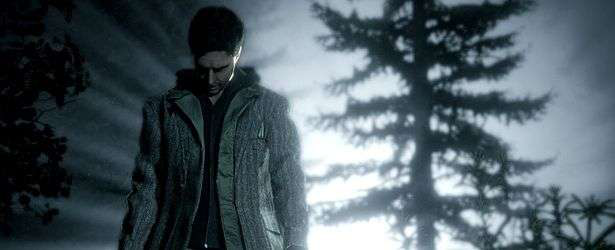
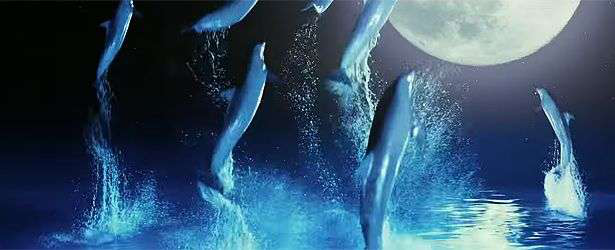
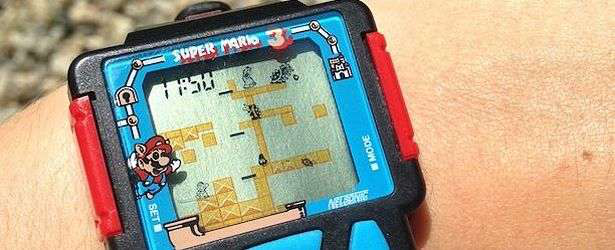











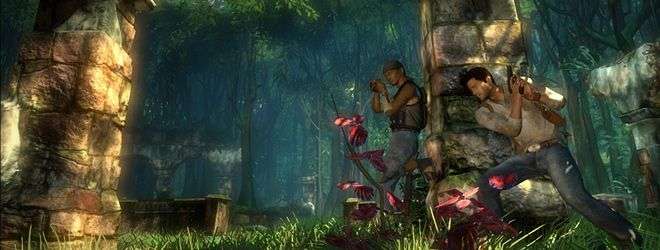

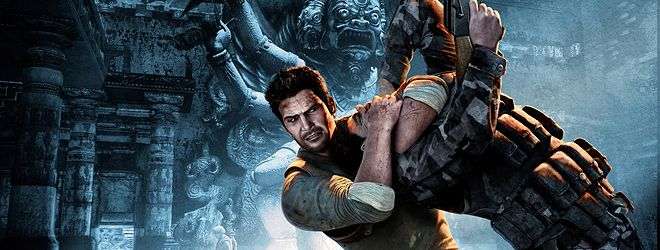









Easily one of the best trilogies of the last ‘generation’ and in my opinion, one that is regularly overlooked in favor of Mass Effect and Gears of War.
This article perfectly highlights each game and pretty much rings true on each of their highs and lows. I personally think Uncharted 2 is the best, having played it a couple of times now. The third one is something I played and traded in straight away – something I now regret because I found it too short. I think I blasted through it within a couple of days and traded in the deluxe edition that came with a replica of Drake’s notebook. Such a foolish thing to do!
Alas, I hope to pick up Uncharted 3 again and give it and the whole trilogy another crack. It’s one of the best out there.
Great article Tim.
Really enjoyed this. This is one of those series that I have yet to play, but which I REALLY need to find the time for, more so than even Mass Effect. The whole concept just massively appeals to me on every level: I love treasure hunting stories, lost cities, ancient history, myths, and adventures and Uncharted bundles them all up with a cheeky Jones-esque protagonist that just screams to everything I love. Must play. Thanks for the jog – time to dust off the PS3.